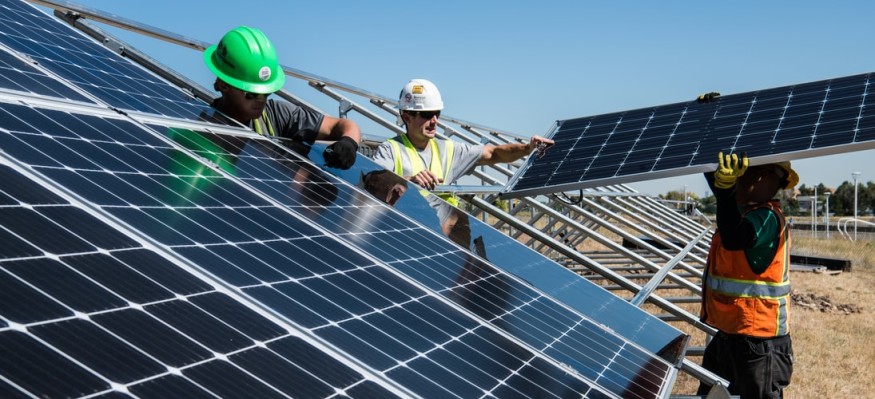Despite the pandemic, global renewable energy output increased by 45 percent to 280 gigawatts in 2020, owing to an "unprecedented surge" in wind and solar energy, according to a recent study from the International Energy Agency. It's the biggest spike in a single year since 1999.

According to the survey, the expansion was fueled by a 90 percent increase in global wind power adds. There has also been a 23% increase in new solar power installations, according to the study.
IEA Survey
The International Energy Agency (IEA), whose aim is to make the world's energy supply more efficient, accessible, and sustainable, reports that renewable energy was "the only energy source for which demand grew... while the use of all other fuels decreased" in 2020.
Broad capacity gains in renewable energy will become the "latest standard" in 2021 and 2022, according to the IEA, with growth close to the record total of 2020.
According to the survey, an enormous volume of green energy came online in the fourth quarter of 2020. China alone added more than 92 gigawatts of power in the fourth quarter of 2019, more than tripling the volume added in the previous quarter. The United States said 19 gigawatts, a significant increase from the 13.7 gigawatts it said in the same quarter last year.
Substantial Difference

Despite advancements in renewable energies, analysts caution that there is already a "substantial difference" between emissions from continued fossil fuel usage and the lower levels needed to reach the Paris Agreement's temperature limits by the end of the decade.
"A major expansion of clean energy is critical to allow the world to achieve its net-zero targets," said IEA Director Fatih Birol on Tuesday, urging policymakers to draw on the momentum of the previous year by investing more in solar, wind, and other renewables, as well as strengthening their electrical grid infrastructures.
The IEA reported that global coal use dropped by 4% in 2020, the largest reduction since World War II. Coal is a major source of greenhouse gas emissions that lead to global climate change. However, since late last year, demand has been resurgent, fueled by Asia's economies, which were among the first to recover from the COVID-19 pandemic.
Green Technology

Another reason is that, even though it invests in "green" technology, China continues to develop new coal-fired power plants. According to the International Energy Agency (IEA), China consumes around a third of the world's annual coal and is on track to set a new record high in 2021.
According to the federal Energy Information Administration, coal-fired power plants account for around 20% of the country's electricity generation capacity as of the end of 2020. Natural gas-fired plants provide the majority of the country's electricity, accounting for 43% of total output, according to the department.
Government Intervention

Since Congress expanded federal tax breaks for solar and wind programs as part of the budget package legislators passed in late 2020, the IEA revised the U.S. clean energy outlook.
According to the Paris-based firm, the sector could grow even more if Congress passes legislation based on President Biden's infrastructure proposal.
On Tuesday, the United States approved a major offshore wind initiative, moving forward with a proposal to construct a turbine array 12 nautical miles off the coast of Martha's Vineyard, Massachusetts. According to the Biden administration, the 800-megawatt plant would generate enough electricity to fuel 400,000 homes and enterprises.
Green China
According to the IEA's Renewable Energy Market Update, many nations, including China, the United States, and Vietnam, were responsible for the tremendous rise in renewable energy last year. Government timelines in all three countries pushed clean energy programs to completion.
According to the survey, China accounted for 50% of global renewable energy capacity growth for the first time. In 2021, the country is expected to introduce marginally less green power capacity while some subsidies for wind and solar plants are phased out.
Just the Beginning

Despite these shifts, solar energy production "will begin to set milestones," according to the IEA, which predicts annual capacity additions of 162 gigawatts by the end of next year, almost 50% more than solar capacity additions in the pre-pandemic period of 2019.
According to the department, renewable energy sources "are projected to account for 90% of overall global power capacity rises" this year and next, citing government policies and investments as encouragement.
During the early 1970s energy crisis, the Paris-based IEA was created. It includes 30 nations, including the United States and eight "association nations," including China and India.
For more Environmental news, don't forget to follow Nature World News!
© 2025 NatureWorldNews.com All rights reserved. Do not reproduce without permission.





